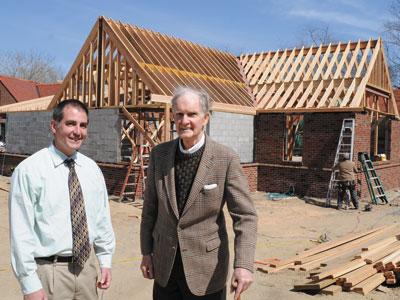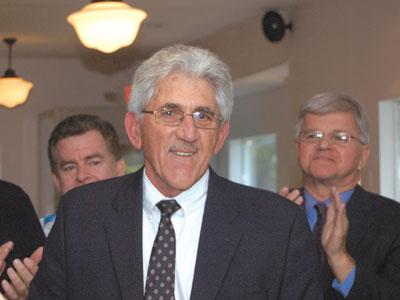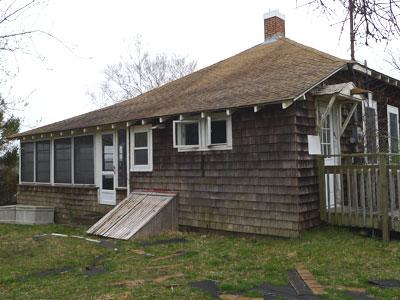A Call to Call In Coastal Experts
A Call to Call In Coastal Experts
A consortium of the major environmental organizations in East Hampton called upon the town this week to seek immediate advice on how to address coastal erosion. An experienced and “nationally recognized engineering firm” should be called in, they said, regardless of whether federal funding is secured for the Army Corps of Engineers to design a beach reconstruction project.
“Designing and funding the short-term and long-term protective measures for our community are too important to attempt without the best professional, scientific, and technical guidance our community can afford,” the consortium said in a letter submitted to the board on Tuesday. It is signed by the heads of the Group for the East End, Citizens for Access Rights, the Nature Conservancy on Long Island, the Peconic Baykeeper, the Eastern Long Island Chapter of the Surfrider Foundation, and the Concerned Citizens of Montauk.
In recent weeks, the town board, after receiving a list of 11 short and long-term recommendations from a committee formed to address coastal erosion in Montauk in the wake of Hurricane Sandy, has bogged down on Supervisor Bill Wilkinson’s insistence that board members accept an Army Corps plan that could include the use of rocks to bolster the hamlet’s shoreline — apparently anticipating that to be what the Army Corps will propose, should the town be included in the agency’s scope of beach reconstruction work. The town has put in a bid for $20 million in federal funding.
Town Councilman Peter Van Scoyoc and Councilwoman Sylvia Overby have held back their approval, wanting first, they said, to see the specifics of the Army Corps’ proposal. The lack of accord derailed action on other recommendations, and the board came under fire last week from Montauk business owners and residents pressing for action before severe storms arrive again. “We’re running out of time,” Steve Kalimnios, the owner of the Royal Atlantic motel, told the board on Tuesday.
“East Hampton will need an expert who does not work for another branch of government or have competing business interests to advocate for our community’s best interest,” says the letter presented to the board on Tuesday by Jeremy Samuelson, the executive director of C.C.O.M. That should be, the writers said, engineers specializing in coastal geology, with experience delivering large-scale, “scientifically supported” beach erosion projects, “representing the highest regard for protecting the longevity of the beach that serves as a critical natural and economic resource.”
Councilman Dominick Stanzione called the environmental coalition’s suggestion “a reasonable request.” But, he said, if a privately engaged engineer issues recommendations that differ from a proposal the town might receive from the Army Corps, “what we’re really doing is paying for opposition within your own ranks.”
“I don’t want to preclude any expertise from coming to the town board and helping us with making a decision,” Ms. Overby said.
“I’m willing to accept the Army Corps, and to not engage in spending town money,” said Councilwoman Theresa Quigley.
“The Army Corps is the senior engineering firm in the United States,” Mr. Wilkinson said. “There’s going to come a time when the Army Corps — if we’re so lucky — is going to say, this is the project; accept it or reject it.”
Mike Marozas, a Montauk resident who recently called and spoke to representatives of the Army Corps, said he was told that the agency is in the funding-allocation stage, and any action is “18 to 24 months out.”
“My concern is, we need to be moving forward without knowing if we get the Army Corps funding or not,” Mr. Van Scoyoc said. Should the town be left out of the federal beach project, something will still have to be done. “I think we should get the best nationally recognized engineers to look at this,” he said.
The town needs to take a “proactive stance,” Ms. Overby said.
All of the board members agree that creating an “engineered beach” in Montauk is needed — designing a beach and dune system that will withstand future storms by adding sand. The question is whether underlying rocks or other hard structures would be included.
“I can see the benefit of having, at least, the services available to educate the board on coastal erosion issues, or a fully engineered beach,” Mr. Stanzione said. But, he added, “I don’t see the need in having such services in dealing with a temporary solution.”
The coastal committee had recommended that beachfront property owners be allowed, on a temporary basis, to bolster threatened foundations with concrete blocks or other “hard” solutions, and the board has been pressured to act quickly to allow emergency actions to take place, beyond what’s presently allowed under the town code — on the ocean beach, only sandbags or sand.
“There hasn’t been any discussion about what the impact of that is,” Mr. Van Scoyoc said Tuesday. “We want to move as fast as we can, but we don’t want to make mistakes that are going to have a long-term impact. So I’m not comfortable with moving forward with any short-term measures without any kind of coastal engineering . . . without understand what the consequences are, what the impacts are.” He said he would be “more comfortable” allowing emergency installations of hard structures if there is a clear time limit on them, and if the town is moving forward concurrently with creation of an engineered beach.
“I’d like to pursue the short-term solutions, and not burden them with too much analysis,” Mr. Stanzione said, “because we have a very short window.”
In response to concerns raised last week about a potential negative effect on the town’s federal funding request, due to division on the board about okaying any potential project posited by the Army Corps, Mr. Van Scoyoc drafted a resolution outlining the board’s agreement to “seek resources” from the Corps for an engineered beach.
Mr. Wilkinson was not satisfied with the wording in the resolution, that the board would “entertain options” presented by the Army Corps.
“I thought the option was to support the Army Corps in their recommendation even if it includes hard structures,” the supervisor said. “If the Army Corps says it will include a rock base, I will support that.”
“You want a commitment on a plan we haven’t seen,” Mr. Van Scoyoc told Mr. Wilkinson on Tuesday.
“I just want to make sure we’re talking about the same Army Corps that took 40 years to come up with recommendations, and the same Army Corps that screwed Culloden,” Mr. Samuelson said Tuesday. He referred to the length of time the Corps’ Fire Island to Montauk Reformulation Plan — now revitalized in the wake of Sandy — has been in the works, and to the installation of jetties at Montauk Harbor, which nearby homeowners blame for exacerbating erosion. “The work of the Army Corps has not been without deleterious impact or cost (financial and ecological) in our community,” Mr. Samuelson and the others wrote in their letter to the board.
“I think the resolution as written is something we could all agree on,” Ms. Quigley said at the meeting. “This is a first step. I think what the supervisor’s asking is, he’d like it to go another step, [to say] . . . whatever the proposal is, we would agree to it.”
A vote on the resolution is expected to take place at the board’s meeting tonight, beginning 7 p.m. at Town Hall.






